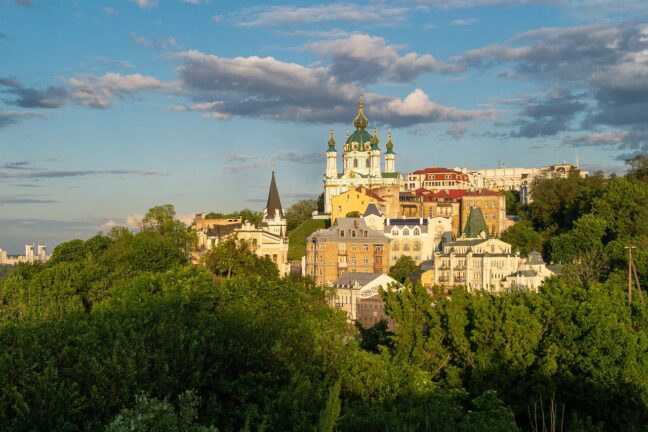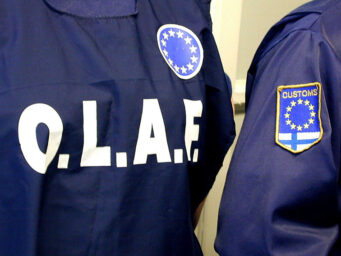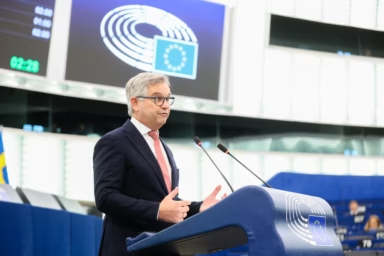The Council of the European Union has loosened the purse-strings once again for war-ravaged Ukraine. It has cleared a fifth payment to Kyiv worth a little over €1.8bn, bringing total disbursements under the Ukraine Facility to roughly €33bn.
The Council said on Tuesday, 4 November that Ukraine had met nine new reform milestones and tidied up “one outstanding step from the fourth disbursement”. The latest tranche is to help Kyiv keep paying civil servants and plug a widening budget hole. “Payments under the Ukraine Facility are closely linked to the Ukraine Plan, which outlines the country’s strategy for recovery, reconstruction and modernisation, along with a timetable for the implementation of reforms aligned with the country’s EU accession goals over the next years,” the Council press release said on Tuesday.
Officials repeated that formula as they sketched the reasoning behind the latest tranche. The nine completed milestones include steps on the judiciary, energy, regional policy and the green transition. “The facility is designed as a coherent and flexible instrument adapted to the unprecedented challenges of supporting a country at war,” the press release said.
Brussels is of the opinion that a front-loaded flow of cash keeps public services running and signals long-term commitment from the European Union. Since Russia’s full-scale invasion, Ukraine has lost market access and tax revenue while spending on defence and humanitarian relief has soared.
You might be interested
Homework done
The Ukraine Facility entered into force on March 1st 2024. “The Ukraine Facility, which entered into force on 1 March 2024, provides up to €50bn of stable financing, in grants and loans, to support Ukraine’s recovery, reconstruction, and modernisation for the period from 2024 to 2027,” the EU co-legislator said. Of that sum, up to €32bn is earmarked for the reforms and investments set out in the Ukraine Plan. “Disbursements are conditional on the delivery of the Plan’s identified indicators.”
Money has moved quickly. “Since its entry into force, the Ukraine Facility has already disbursed €6bn by way of bridge financing, €1.89bn in pre-financing, and four instalments of approximately €4.2, €4.1, €3.5 and €3.2bn respectively,” the Council said previously. The fifth transfer adds to this pile, cushioning Kyiv against erratic tax receipts and the cost of war.
The Commission checked Ukraine’s paperwork on September 29th. Following the Commission’s assessment of Ukraine’s payment request on 29 September 2025, the Council concluded that Ukraine had satisfactorily fulfilled a number of reforms set out in the Ukraine Plan. Brussels praised progress against corruption, better oversight of critical raw materials and environmental safeguards.
Strings are attached
The money is not a blank cheque. EU makes the payments available to Ukraine “subject to the implementation of the agreed reform and investments by way of the qualitative and quantitative steps set out in the relevant Council decision,” the body said. Kyiv must also stick to democratic rules. “In addition, financial support under the ‘Ukraine plan’ is available on the precondition that Ukraine continues to uphold and respect effective democratic mechanisms,” the Council made it clear that payments come with strings attached.
The Ukraine Plan, presented in March 2024, still guides the disbursements. “The plan emphasises structural reforms and investments in the sectors with the greatest growth potential,” the Council statements reads. It places stress on clean government: “It covers planned improvements in public administration, emphasising good governance, adherence to the rule of law and the fight against corruption and fraud.”
With the facility, the EU has a unified and legal instrument at hand that ensures a consistent and transparent approach and a coherent and integrated policy response to the situation of Ukraine. — the Council of the EU’s press release
The facility’s designers tried to bake in transparency. “It aims to ensure the predictability, transparency, and accountability of the funds,” the press releae reads. An independent audit board watches the cash. “A dedicated independent audit board will scrutinise the use of the funds. Officials think this architecture reassures sceptical taxpayers in member states.
A mid-term perspective
War has multiplied needs. “Russia’s war of aggression against Ukraine has caused Ukraine damages amounting to hundreds of billions,” the Council reiterated. Rebuilding looks eye-wateringly dear: “Reconstruction costs are nearing $486bn over the next decade, resulting in a loss of access to financial markets and a significant drop in public revenue, while public expenditure to address the humanitarian situation and to maintain the continuity of state services has increased markedly.”
With the Ukraine Facility, the EU has fused disparate funding lines: “With the facility, the EU has a unified and legal instrument at hand that ensures a consistent and transparent approach and a coherent and integrated policy response to the situation of Ukraine.” Loans worth €33bn and grants of €17bn form the €50bn envelope. The total budget of €50bn is provided through both loans (€33bn) and grants (€17bn).
Predictability is the selling point. The facility also provides a clear mid-term perspective, with predictable funding for the 2024-2027 period. Officials say that reliability helps Ukraine, but also “international partners and other donors“. Private investors will not bet on Ukrainian growth unless public money arrives on time.
A rocky road ahead
Some in Brussels worry that reform benchmarks may slip as war drags on. For now the Council insists Ukraine remains on track. Prior to November 2025, the Council has approved four payments of grants and has mobilised loans under the Ukraine Facility and €31.3bn in total. Today’s fifth payment nudges that figure past €33bn.
Not all future milestones will prove easy. Ukraine must keep pruning Soviet-era regulations, tame powerful oligarchs and overhaul regional governance. Each disbursement therefore doubles as a progress report. If targets wobble, money will stall. The Council argues that such conditionality blends carrots with sticks, making the accession path tangible.
Following the Commission’s assessment of Ukraine’s payment request on 29 September 2025, the Council concluded that Ukraine had satisfactorily fulfilled a number of reforms set out in the Ukraine Plan. — the Council of the EU
Yet fatigue lurks. Member states face their own fiscal squeezes, and some voters ask why Europe pours money into a distant war. Officials counter that helping Ukraine defend itself is cheaper than letting Russia win. They also point out that modernising Ukraine opens a market of 40m consumers and vast mineral resources to the single market.
Financing a war-torn neighbour remains messy, but few doubt the necessity. The facility, its backers claim, gives the EU a way to square solidarity with scrutiny. That balance may prove harder as the conflict grinds on. For the moment, though, Kyiv can pay its bills; Brussels, for its part, can claim its conditions are working.








